
Intermittent fasting, also known as IF, is the process of giving your body a break from metabolizing food for a certain period of time. Researchers have discovered that fasting for just 12 to 24 hours at a time can help with weight loss and overall health. Many doctors practice IF and recommend it to their patients. People also fast for personal and religious reasons.
Whatever your reasons are for choosing to fast, you can add the benefit of autophagy to your list! Even if you are not sure about fasting yet, keep on reading and check out our courses to learn more!
Autophagy is one of the many benefits of intermittent fasting. Autophagy is the removal of dysfunctional components in the cells of your body. It involves an orderly breakdown and recycling of cellular components. Your cells maintain low levels of autophagy all the time. However, if your body is low on nutrients or it needs more energy, the cells can increase their autophagy.
When going without food, for even short periods of time, the body switches into a fat-burning mode known as ketosis. Ketosis is interpreted by the body as a warning of lean times to come, so cells throughout the body begin autophagy. Your body may also need more energy during an exercise session. During both fasting and exercise, the cells can remove old components that are damaged or turn the components into something useful like sugars and other building blocks.
We created a course about autophagy and you can also check out this blog post for a more in-depth look at autophagy.
As a follow-up, we have a new course called “Why is autophagy good for your health?” This course explores the science behind how intermittent fasting and exercise ramp up the autophagy process. It also discusses how autophagy helps fight diseases.
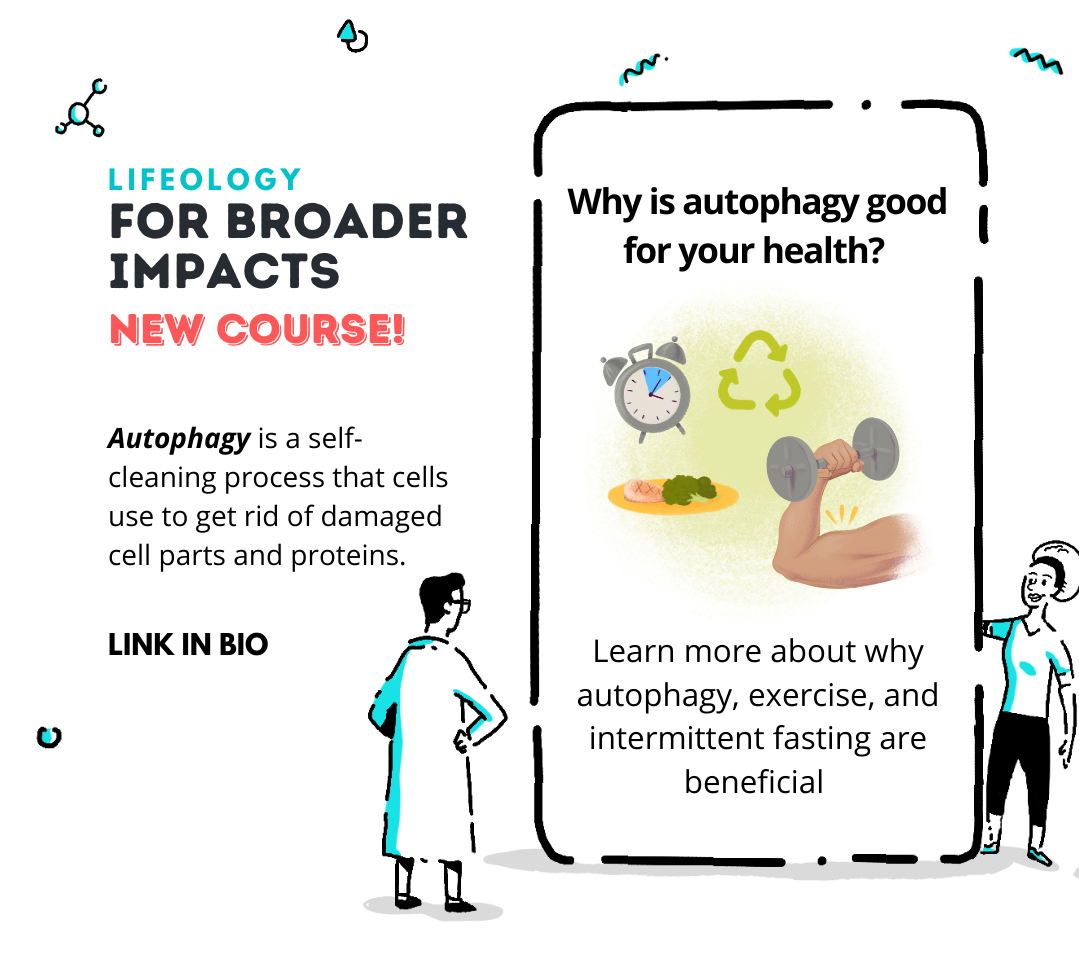
Autophagy can protect your brain by removing damaged proteins and provide your cells with energy when food is scarce. Help your cells renovate themselves by regularly practicing intermittent fasting and exercise! You can start tracking your fasting habits with this app.
Both courses were written by Luisa Torres and illustrated by Tori Rogers. Keep reading to hear about Tori’s experience with illustrating these courses!
Hear from the artist:
I recently had the opportunity to collaborate with Paige and Luisa to illustrate Lifeology courses on autophagy, the process by which your body’s cells break down and recycle old parts.
“Illustrating these courses was the perfect opportunity to collaborate with other science communicators and use my creative skills to make cell and molecular biology come to life.”
As the artist, the first step in the process for me was the storyboard stage. For each course, I read the script that Luisa wrote and sketched out some ideas for each card. There were a few things I needed to keep in mind: the audience, the objectives of the course, and accuracy. Autophagy is a complex mechanism in cell and molecular biology, and I needed to make it understandable and engaging for everyone.
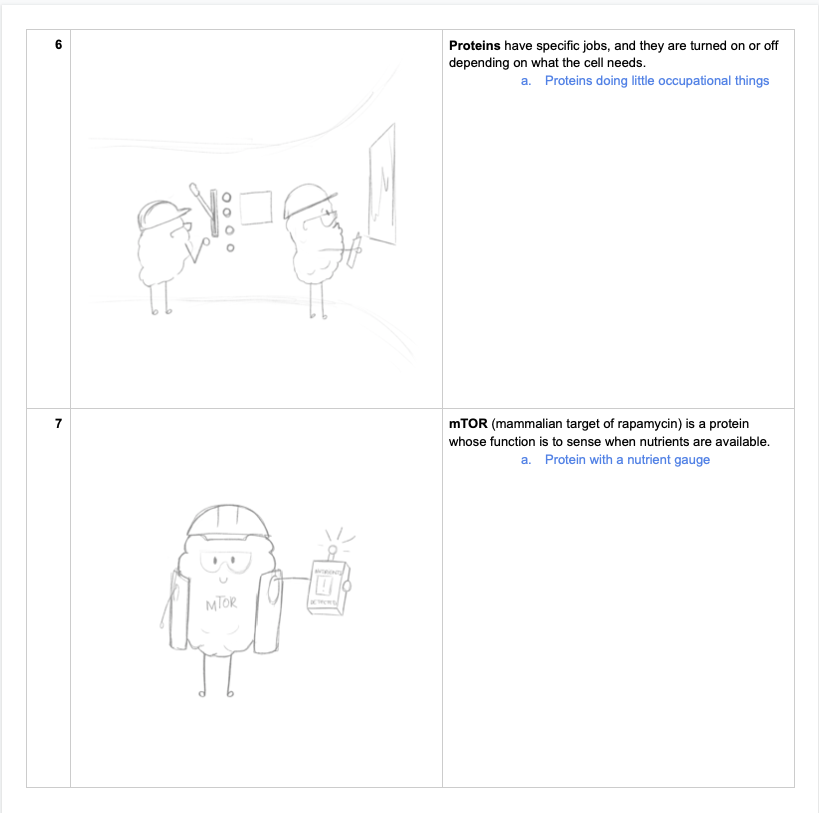
I wanted to create some fun characters that could lead the audience through the process. I sketched out my ideas and lined each one up with the script in storyboard form, to be sure that my visual idea matched the teaching objective of each card. Paige and Luisa reviewed them, and we briefly discussed some edits to make the images as informative as possible.
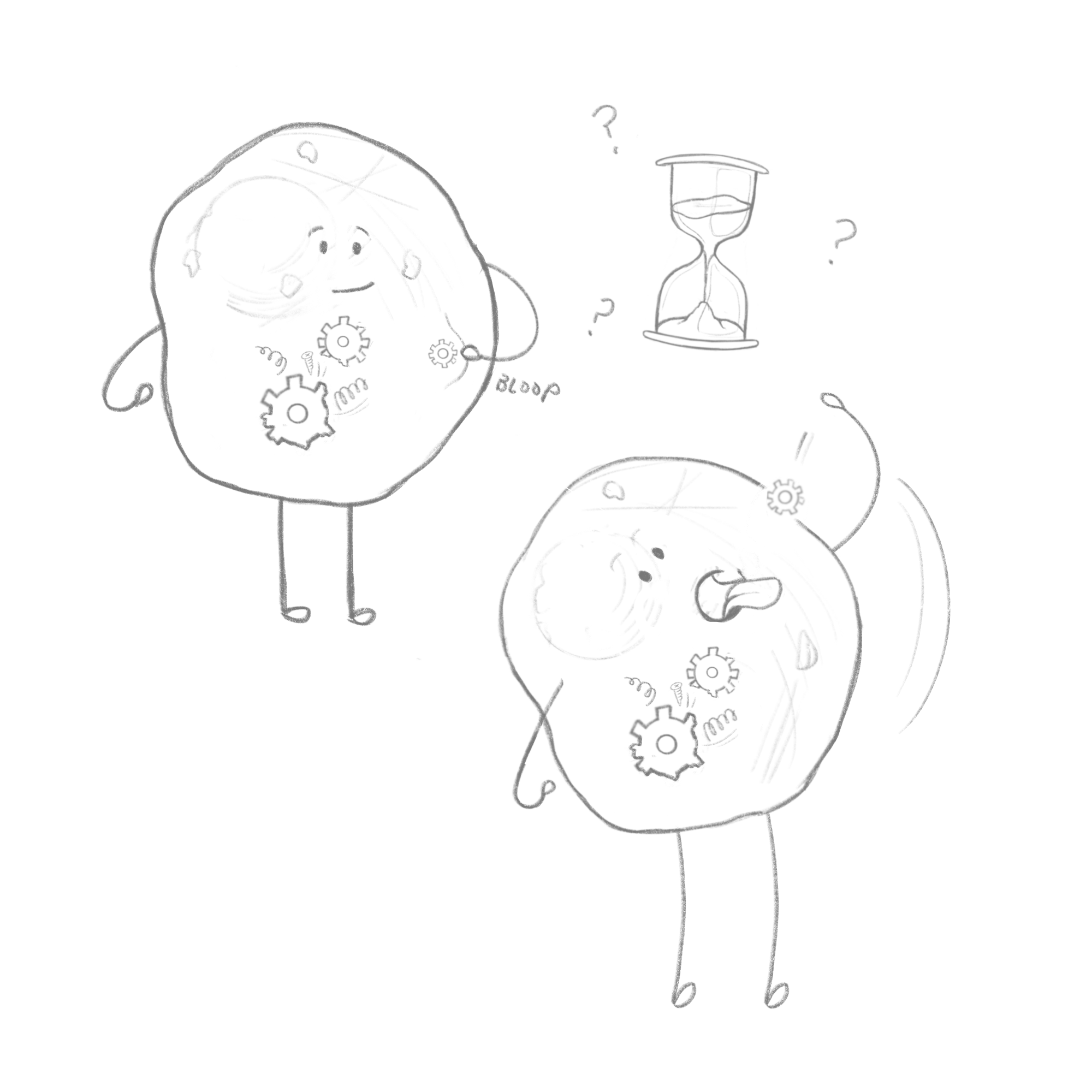
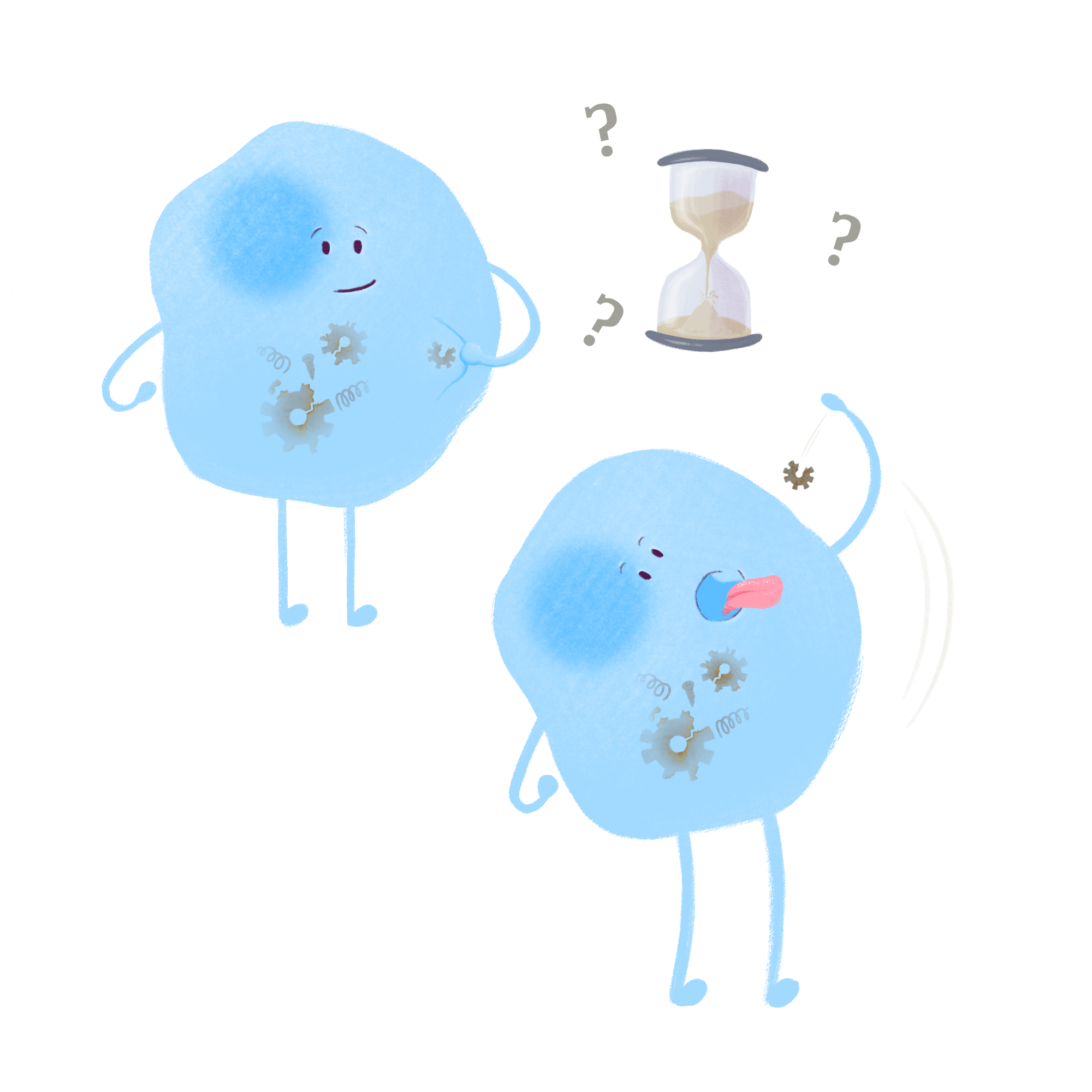
Next came the artwork stage. With Lifeology courses, there is a lot of flexibility in terms of the artwork style. I kept my list of audience, objectives of the course, and accuracy in mind when considering the style. It needed to be simple, eye-catching, and vibrant.
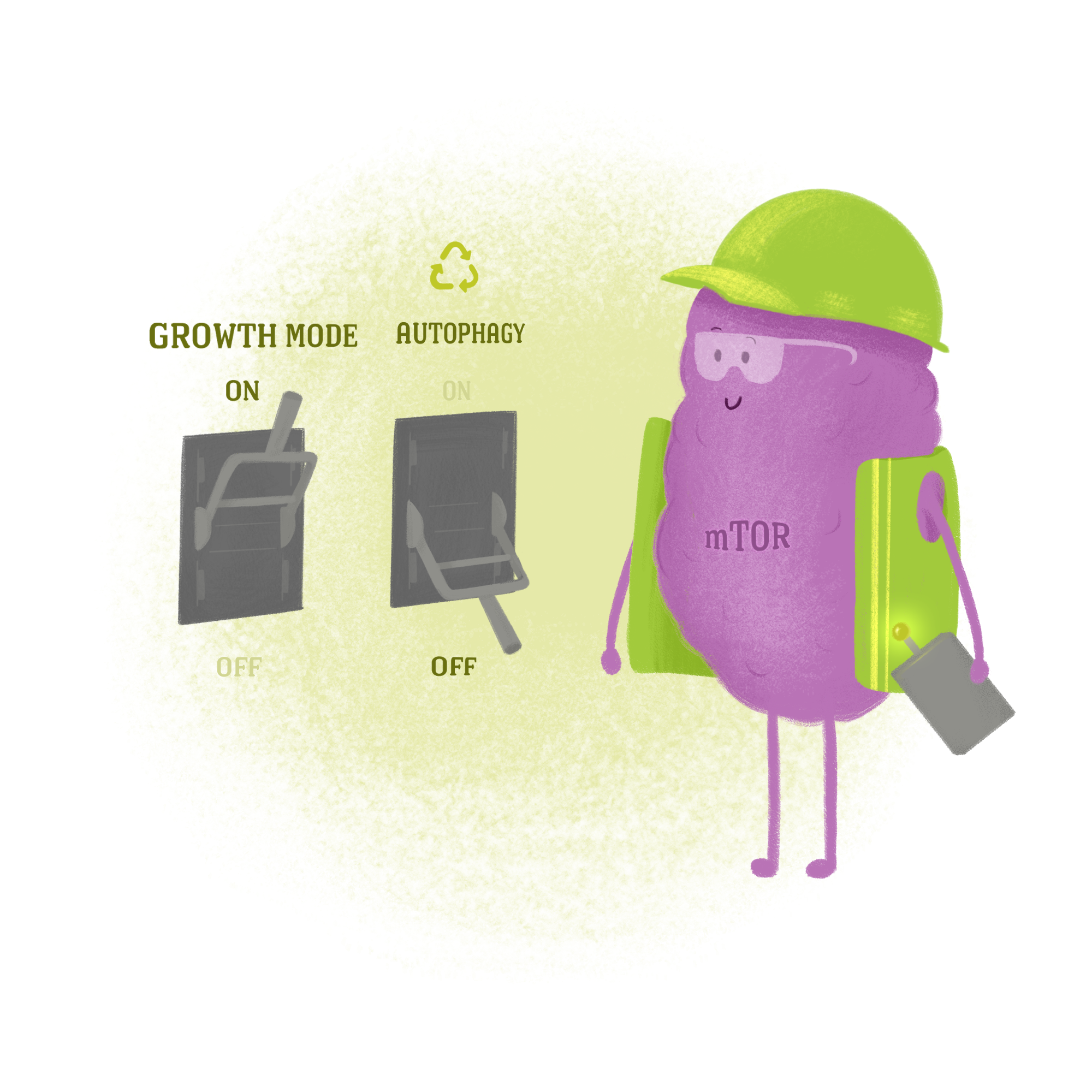
I chose a bright color palette with a lot of green to represent the recycling process. Color is an important tool in the illustrator’s toolbelt. It can help tell the story just as much as the images!
I do most of my drawing on my iPad, using Procreate. I layered the illustrations with color and detail. Next, I made sure to apply labels to assist with the audience’s understanding. I added final touches and then the course was complete!
The process of creating the Lifeology course was fun from start to finish. As a biomedical illustrator, I am passionate about making science accessible and exciting. Illustrating these courses was the perfect opportunity to collaborate with other science communicators and use my creative skills to make cell and molecular biology come to life.

Tori Rogers is a medical illustrator who’s passionate about illuminating the vision of scientists and healthcare providers. You can follow her on Instagram @rogersbiomedical and Twitter @rogersbiomed.





